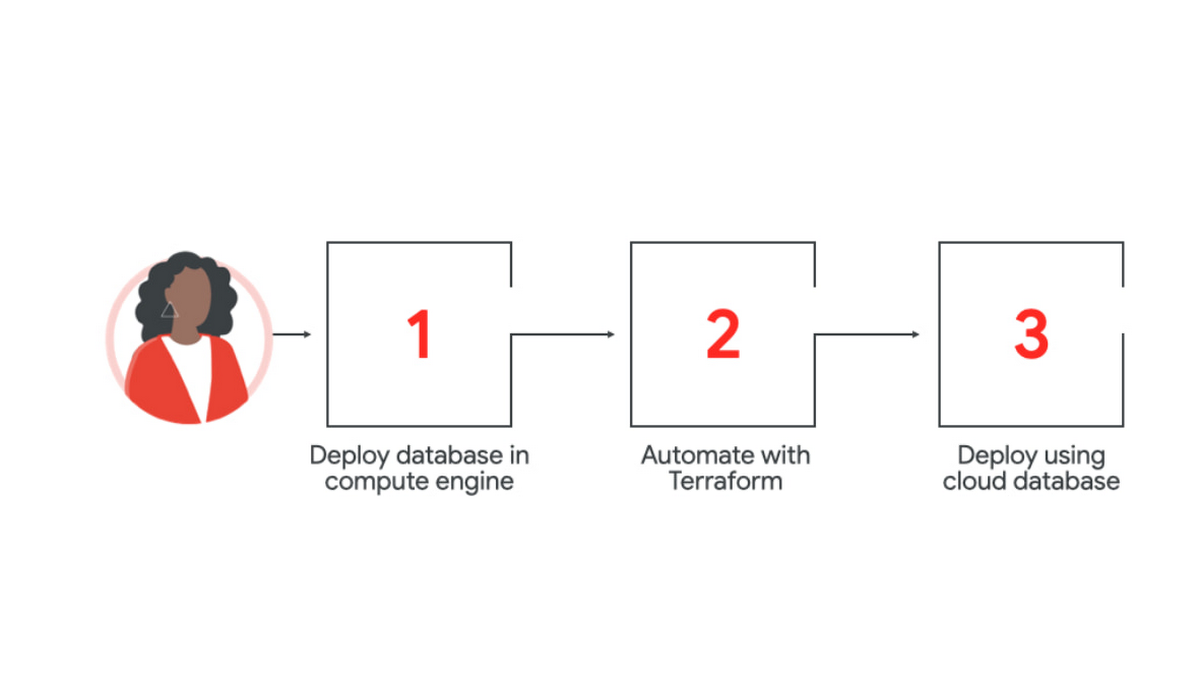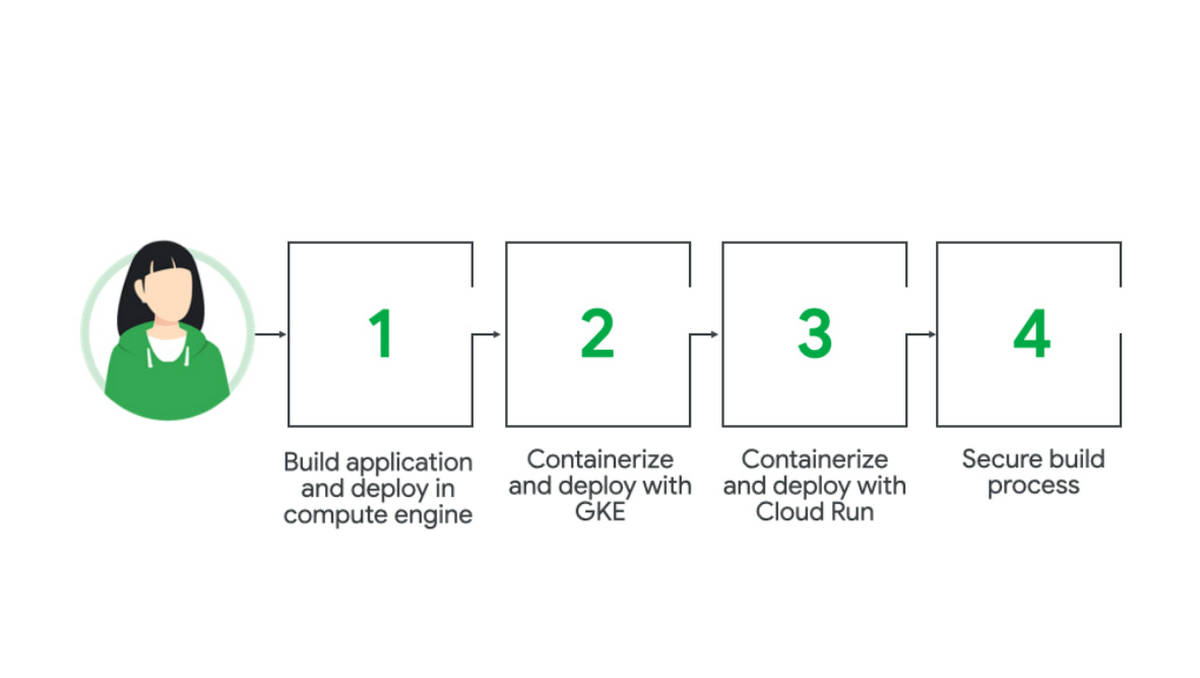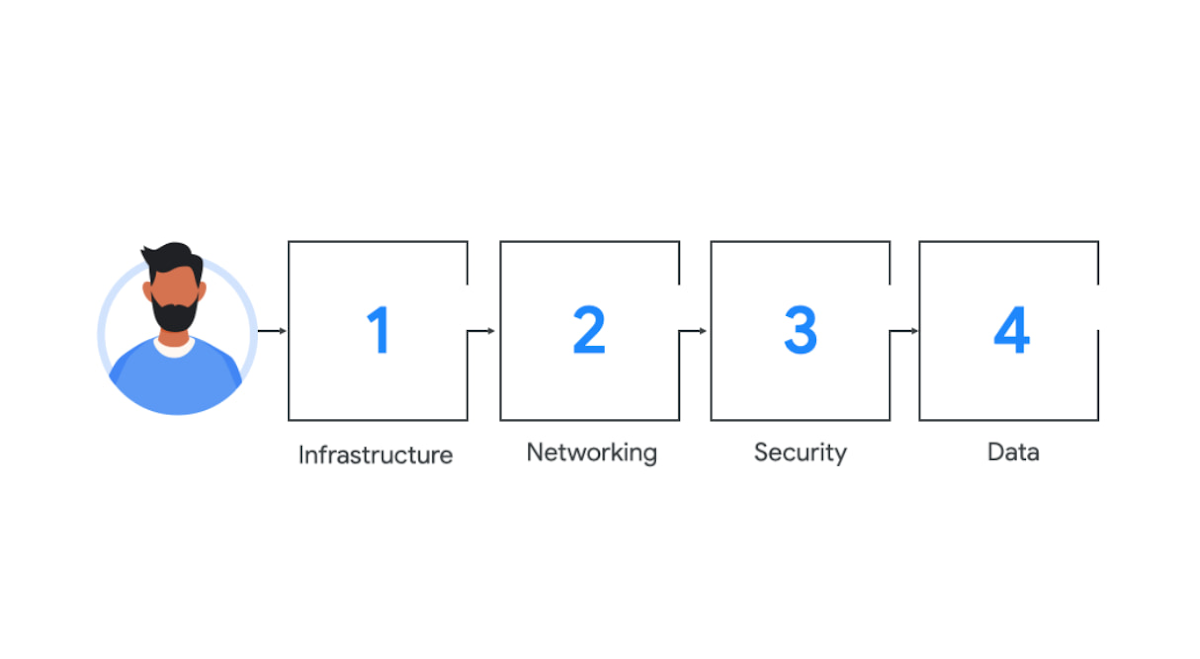How to transition your career into an in-demand cloud role with suggested job paths

Priyanka Vergadia
Staff Developer Advocate, Google Cloud
I often get questions from people who are interested in pursuing a career in cloud computing. As the cloud continuously evolves, opportunities open across the major categories of infrastructure, networking, application development, security, operations, automation, data analysis and AI/ML. There is a lot to choose from!
So how do you begin building a career in the cloud? I’m going to outline some common roles, like database administrator and application developer, and suggest recommended paths to transition current knowledge in these roles into the in-demand skill sets to become database engineers or cloud developers. I’ll also point to some training materials available on Google Cloud Skills Boost to help you get to your career destination.
Which path do you want to take?
Let’s go through some examples.
Nina - Database Administrator to Database Engineer
Here is Nina, who has been a database administrator for years. A good direction for her is a database engineer path. She can start by using what she already knows, which is deploying a database in a compute engine instance. Next, automate that deployment with Terraform or Infrastructure as a Code. As the third step, deploy that using a cloud database such as CloudSQL.


Training recommendations:
Google Cloud Fundamentals: Core Infrastructure - introductory level, 5 days (30 credits)
Managing Cloud Infrastructure with Terraform - intermediate level, 7 hours (32 credits)
Database Engineer Learning Path - various levels, 8 learning activities (141 credits)
Relevant certification
Professional Cloud Database Engineer certification - after completing the learning path and gaining relevant experience, prepare for the exam and demonstrate your knowledge
Reena - Application Developer to Cloud Developer
Reena is an application developer, and transitioning to a cloud developer role is a natural path. She can start creating her cloud experience by building an application and deploying it in compute engine. Next, she needs to learn about containerization aspects. She can do this by containerizing that app and deploying it to Google Kubernetes Engine. She would then need to containerize and deploy it with serverless Cloud Run. Last, she can start exploring cloud build and cloud deploy processes that are outlined in Nina’s example.


Training recommendations:
Cloud Developer Learning Path - various levels, 11 learning activities (223 credits)
Deploy and Manage Cloud Environments with Google Cloud - introductory level, 8 hours (13 credits)
Manage Kubernetes in Google Cloud - intermediate level, 5 hours (16 credits)
Relevant certification
Professional Cloud Developer certification - gain knowledge on highly available applications with real-world experience, learn about the exam, and earn your certification to validate your expertise
Shiv - No cloud background
Shiv is starting fresh with no experience, but knows he wants to get into cloud. In these cases, I recommend becoming an Associate Cloud Engineer. This does not necessarily require a certification! However, it does give a very well-rounded background in areas like infrastructure, networking, security, and data, making it a great foundational jumping-off point. From there, you can pursue a specialization, or continue as an architect.


Training recommendations:
Cloud Engineering Learning Path - various levels, 13 learning activities (237 credits)
Cloud Architect Learning Path - various levels, 16 learning activities (302 credits)
Relevant certifications:
Associate Cloud Engineer certification - this exam will demonstrate your ability to set up a cloud environment and solution and earn you a certification
Professional Cloud Architect certification - once you’ve gained more real-world experience, prepare for the certification exam and show your advanced skills
Other key tips
To build a sustainable cloud career, here are some additional essential skills and knowledge elements to have in your toolkit:
You can check out my book “Visualizing Google Cloud: 101 Illustrated References for Cloud Engineers and Architects” which is considered a reference book and a starter kit to get into Google Cloud. It helps you picture all the products into solutions and how they work with each other.
You can always check out Google Cloud Skills Boost as a resource to help you build your skills and demonstrate your expertise to hiring managers. The catalog contains hundreds of learning activities in a variety of formats like hands-on labs, quests (series of labs), and courses that include videos, documentation, labs and quizzes. You can also earn skill badges for your profile and share on your social media!
No matter where you are in your career, make sure you have some coding knowledge - I recommend starting with Python.
Understand internet fundamentals, like the basics of how it works, what happens when you enter a URL into the browser, how servers establish connections, how DNS works, how you get the IP address for a host name, the various types of databases and how they are used, and other critical details.
The value of certification
While certification isn’t always required, there are benefits to being certified. Having a structured study plan can help you gain skills faster. It also provides a place for hands-on experience with labs. This way, you demonstrate your expertise and validate your know-how in impacting business objectives. Not to mention, 87% of Google Cloud certified users have boosted confidence in cloud skills,* and reported a positive impact on their salaries and promotion opportunities!
Google Cloud currently offers eleven certifications, all organized by role, from foundational, to associate and professional. Take a look here if you are considering a Google Cloud certification, to learn which may be right for you.
How do I show I have the right experience?
Get ready for your interview with the hiring manager! Here are some ways to demonstrate you are a strong cloud candidate for the role:
In preparation, collaborate with team members at your current company on projects that include opportunities which align with where you want to grow your cloud career.
Build your own project! This can be anything that you are passionate about. Just make sure it spans the key areas of programming, networking, basic Linux skills, and deploying whatever you build into the cloud. Examples include building a web application or an API. This will help you develop coding skills, pick out infrastructure for deployment, storage, database options, how to connect things…which all leads back to my earlier tips about internet fundamentals! Make sure to then share on GitHub and/or LinkedIn.
Check out our architecture diagramming tool to represent your vision and share it with others - with new updates! For example: as you drag and drop on the canvas, we are now generating Terraform strips for each component so you can easily deploy into Google Cloud. I recently wrote about that in detail here.
Once you have entered into a cloud role, you can think about how you will grow further as the cloud evolves. I shared four key trends to watch in the next decade, and the cloud roles that will be needed to support them. You can read that blog here, and help create the next generation of cloud technology.
*Based on survey responses from the 2020 Google Cloud certification impact report.


